
Somewhere in The West Thirties, from the series The Space Between, 2013. © Marc Yankus.
Editor’s Note: This feature was originally published on our previous platform, In the In-Between: Journal of Digital Imaging Artists, and the formatting has not been optimized for the new website.
Statement:
My latest photographs are hyperreal “building portraits” shown in my most recent solo exhibition at ClampArt, The Space Between. In this series, select historical buildings are portrayed in altered cityscapes and invented spaces that evoke the experience of memory, imagination and dream states playing out in a magical place. Strangely familiar, the buildings are elevated in a fictional composition that appears to tell a story or reflect a past history, but their power resides more in the realm of sensation than explicit narrative. The buildings seem to emerge from the landscape, shaped by the space around them or, in some cases, by the space between them. These surrealistic alterations of New York’s architectural skyline are a cross between imagination and documentation. As portraits, they are meant to reconstitute awareness and preserve the buildings through adjustments in reality and perception.
I’ve always been drawn to the majestic details and materials of classical historical buildings, many of which are hidden from view, tucked behind new architecture, or simply overlooked. Often discovered from rooftops or accessible from private views, I feel compelled to capture the slivers of the old, recreate the buildings to make them whole, and restructure them in place and history. Somewhere in the West 30s, is the result of catching a partial glimpse and constructing the rest of the building from my imagination. It turns out that when I walked around the corner and looked up I realized it was The New Yorker Hotel, which is not at all what I saw and rebuilt in my mind’s eye.
In my reimagined vision of the city, the historical buildings are fully present, imbued with a hyperreal quality of precise, sharpened edges and meticulous details preserved in a soft, subdued palette. By digitally painting and layering textures, I silhouette the “figure” from “ground” so the building stands in calm, airy isolation for the viewer’s gaze. In Stairs Building, I was drawn to the strange design of rectangles on the street-side facade and the discreet doors tucked away towards the back. For this portrait, I faded out the surrounding buildings in a haze to make the featured building more prominent and monolithic. Another mystery was the strange, intimate space between a building in “Building Split,” which I imagined to be air reserved for the building to breathe. The second part of the building is close, almost touching, creating a deep narrow cavern, a dark negative space that few passersby notice.
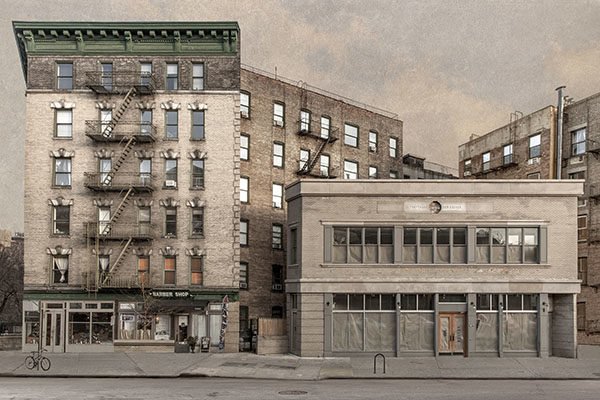
Barber Shop, from the series The Space Between, 2015. © Marc Yankus.
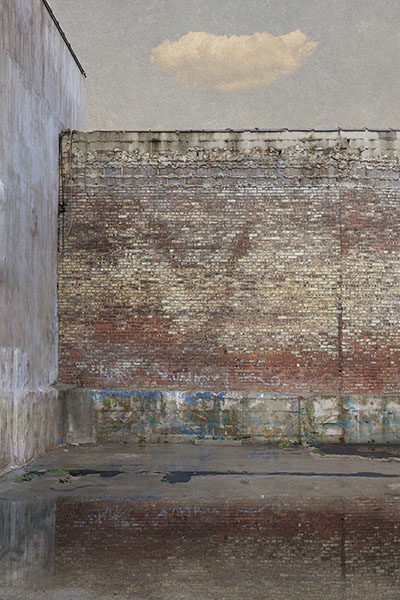
Empty Lot in The West Village, from the series The Space Between, 2014. © Marc Yankus.
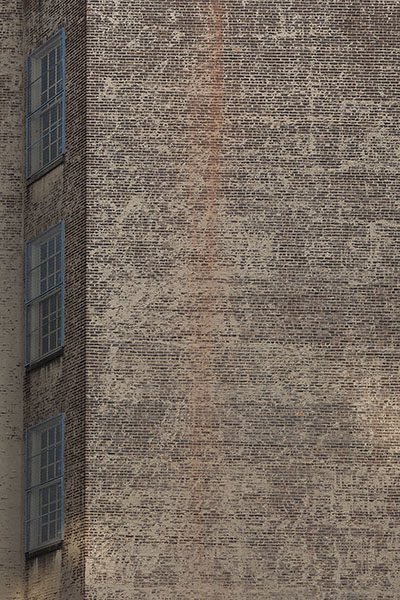
Three Blue Windows, from the series The Space Between, 2013. © Marc Yankus.
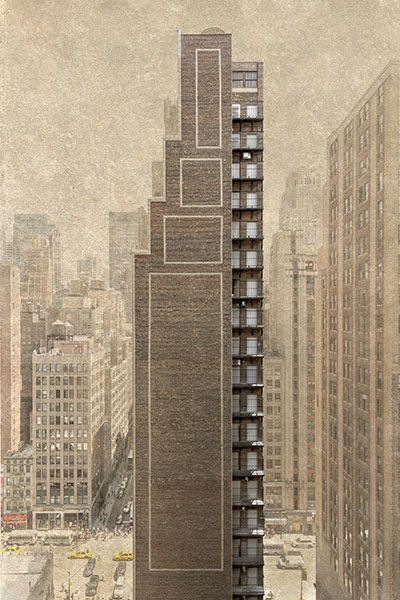
Stairs Building, from the series The Space Between, 2013. © Marc Yankus.
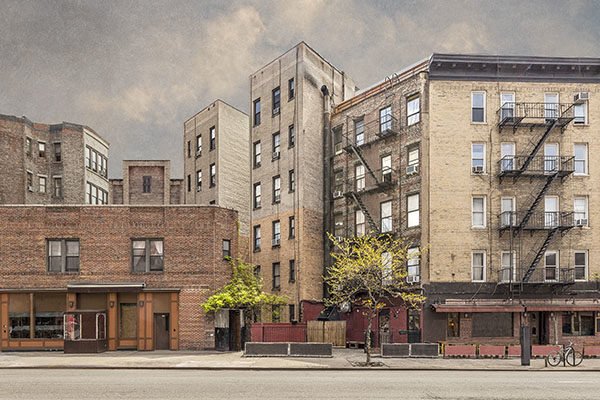
Seventh and Bedford, from the series The Space Between, 2015. © Marc Yankus.
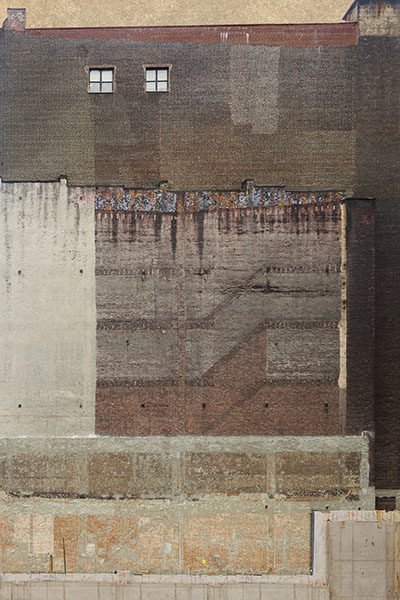
Side of Building, from the series The Space Between, 2013. © Marc Yankus.
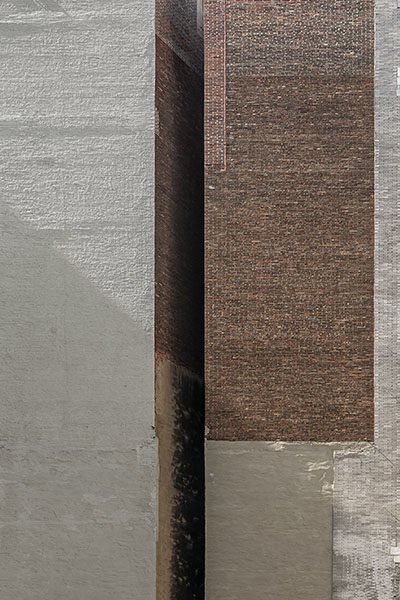
Building Split, from the series The Space Between, 2013. © Marc Yankus.
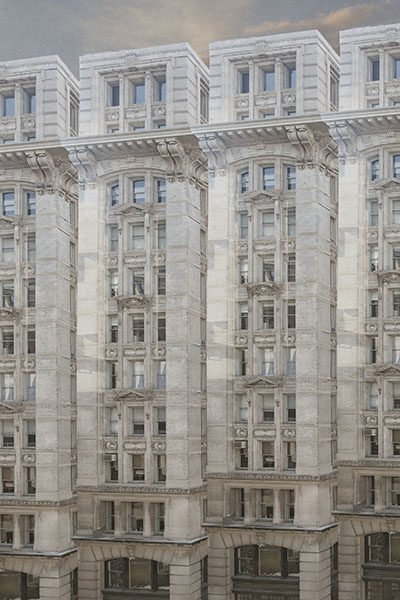
Row of White Building, from the series The Space Between, 2014. © Marc Yankus.
Bio:
Over the last three decades, Marc Yankus has built a reputation as an artist creating imagery, with an uncanny eye for the beauty inherent in the buildings and it’s denizens.
His luminous art photographs have been exhibited in galleries and museums across the United States and in international art shows. His work has been included in exhibitions at The Brooklyn Museum, Brooklyn, NY, Exit Art, New York City, The Library of Congress, Washington DC and at ClampArt, New York City.
Yankus’ photography was recently included in a book of photography published by Rizzoli called “New York; A Photographers City”.
The New York Historical Society, The Museum of Fine Arts, Houston, and Department of Prints and Photographs of The Library of Congress have acquired his work for their permanent collections, as well as many private collections.
The gallery, ClampArt, in New York City represents Yankus.
___________________________
Stay connected with In the In-Between
